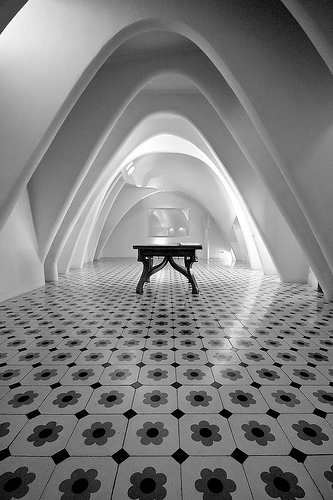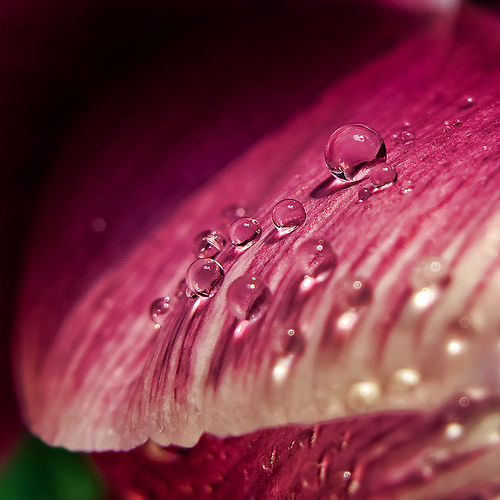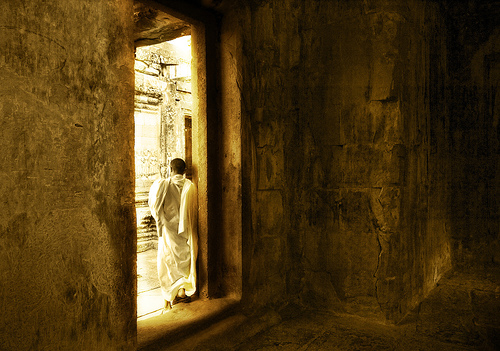
In Part-I of the series photography principles from design, we discussed 8 photographic design principles to create professionally composed photographs. Before proceeding with this one, check out Photography Principles From Design-I to see how rhythm, harmony, symmetry, balance, proportion, emphasis, contrast and unity contribute in making great photographs.
In this series, we review the remaining seven principles which will take your photographic composition skills to an advanced level.
-
Variety
The design principle of variety refers to use of diverse elements in the photograph. This may include a variety of colors, shapes, textures or subjects as well. These varied elements portray unity in diversity thus making the photograph interesting. For instance the cloudy skies shot during the magic hour present the unison of blue, orange, pink and white which makes the scene all the more dramatic and the outcome is an impressive image. While a lack of variety can make the photographic composition dull, a lot of variety on the other hand may create an effect of chaos where the viewer might get confused about the intention of the photographer and the point of focus. Therefore, a well balanced variety is a must for a pleasing photograph.
-
Movement
Technically movement refers to something which signifies motion or action in the photograph. In this respect it means to capture the motion and movement by choosing appropriate shutter speed to portray motion blur, render panning effect or simply freeze the action. When speaking in terms of design principles, movement refers to the ability of the visual image to guide the human eye in some particular direction by effectively using lines, curves, shapes and form. Vertical lines for instance leads the eyes upward, horizontal lines direct the eyes inwards while shapes and form guide the eye in deciphering the structure of the subject.
-
Form
Form refers to the closed contour of element / subject in the photograph. The properties of light play an important role in depicting the form on the two dimensional photographic surface. The side-lighting plays a prominent role in rendering form in fine art photography. When an object in the case of table top photography and the subject in case of fine art photography is emphasized with the help of sidelight, a shadow is rendered and the element seems more dynamic and its depth becomes more pronounced; giving it a three-dimensional effect. Form is immensely useful in heightening the sense of three dimensional reality (as in the following image the water droplets look more real and natural owing to the use of side light).
-
Gradation
Gradation refers to a gradual change in the linear perspective, shapes or color shades in the scene. The change in color may be with regards to its hue, saturation or the tonal values (warm to cool or dark to light) while the shapes may ascend or descend from big to small. For a gradation in the linear perspective, direction and size of an element is used. The size of the element, if gradually decreased in a particular direction gives an illusion of increasing distance (because of the constant reduction in scaling).
-
Perspective
Another design principle or design element to be precise is the perspective. Perspective signifies the utilization of your photographing skills to present a creative outlook of the scene or the subject. Perspective portrays your unique viewpoint in the photograph. Perspective helps you in making the photograph interesting by adding the missing third-dimension to it. Adding your perspective to the composition weaves a story around the captured scene; elaborating your unique style of observing and photographing. Learn more about perspective here.
-
Negative Space
Negative space is the free / empty space around the subject of an image. It simply refers to the space which is not utilized by the main subject (as opposed to the positive space of the image). Negative space renders a soothing effect to the photograph by providing the place for resting the eyes. The effective use of negative space helps in leading the viewer’s eyes towards the main subject. Employing the negative space makes your photographs desirable for advertisers and designers thus increases your prospects of making money with photography (by selling the photographs online). Check out the article on negative space to learn more about using the negative space creatively.
-
Simplicity & Minimalism
Simplicity is one of the main components of the good photograph. It is the technique of enhancing the visual appeal of the scene by keeping distracting elements off the photographic frame. Simplicity enables you to portray the aesthetics of the subject effectively. This design principle thus helps you in conveying a clear and strong viewpoint. Simplicity depends a lot on the way you present the subject. For example eliminating the background clutter, limiting the number of elements in the photograph, employing negative space and using complimentary colors help in intensifying the simplicity which ultimately helps you in drawing the viewer’s attention to the main subject. (Learn more about simplicity here)
The design principles have an elaborate impact on the way an image is read and appreciated by the critics. An image portraying the visual symmetry, unity, balance, simplicity, gradation and so on definitely look good even when the underlying principles are not noticed by the common man. However it is rare that one single image employs all the principles. Sometimes just focusing on one principle alone can also create a strong point of interest in the photograph. By the way, are you practicing the design principles?








